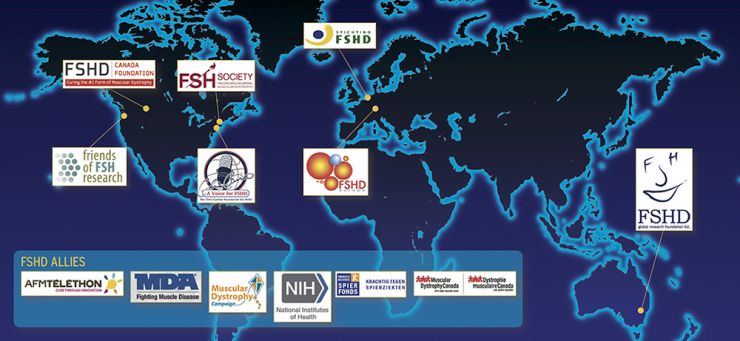Posted by Gregory J Block MSc PhD on Jan 20, 2015
Three months ago, at the 2014 International Research Consortium (IRC) held in San Diego, researchers from all over the world met to discuss their latest data, and the trajectory of the field.
Following the meeting, the FSHD Champions met to discuss the research priorities for 2015. For those of you who don’t know, the FSHD Champions are representatives from all FSH funding research organizations. The Champions was formed so that different organizations can communicate and align their interests and expertise towards advancing FSH research.

Most importantly we discussed the emerging trends that are arising in the FSHD research community. Presentations by Yi Wen Chen, DVM PhD, and Fran Sverdrup, PhD, highlighted that research has begun to focus on identifying and developing lead compounds that prevent DUX4 from being activated in skeletal muscle.
There are three strategies for reducing DUX4 levels: stop DUX4 from being made, stop it from functioning, or stop DUX4 from being toxic. The work highlighted the need to be thoughtful about how cellular models of FSHD are utilized when deciding the function of a lead compound. We also now have a clear picture of the merits and shortfalls of our animal models of disease.
Another emerging trend is the role that epigenetics plays in FSHD. We’ve known for a long time that there are alterations to the epigenetics of the DUX4 array (if you don’t understand what I just wrote, click here). In fact, clever work by Richard Lemmers and Sylvere van der Maarel demonstrated the first link between disease severity and epigenetic status of the D4Z4 array (link to paper).
Work presented by Kyoko Yokimori showed beautifully that DUX4 expression is dependent on these epigenetic changes (link to paper).
This kind of information may seem esoteric, but arms our intellectual toolkit with what we need to make critical decisions about how FSHD should be treated.
It would be redundant to write that the climate is changing in the FSH muscular dystrophy (FSHD) research community. I’ve written before that we’ve gone from being a tight knit group of researchers to an expanded set of interested parties who want to develop treatments or a cure for FSHD.
The question moving forward is how we can best use our limited resources to ensure that potential treatments for FSHD move forward through clinical trials?
The development of therapies for FSHD is not a singular or linear process – and it’s not unreasonable to proceed with caution. Recent data from other neurological diseases estimates that the failure to translate from the lab to the clinic is a result of an incomplete understanding of basic fundamentals at multiple stages of the drug development pipeline.
Although we are now at an inflection point in the trajectory of FSH research, we still have an incomplete understanding of some fundamental concepts, and will need to work together to support studies that will clarify the path.





Connect with us on social media